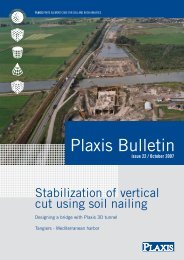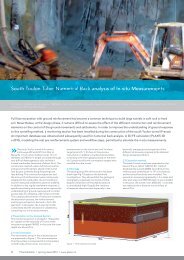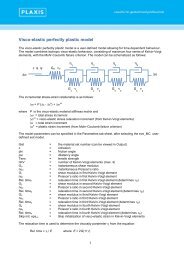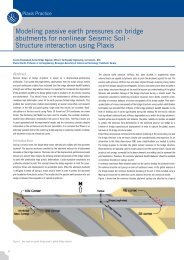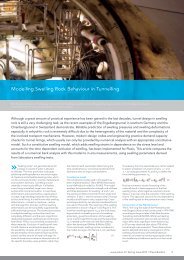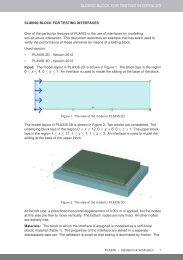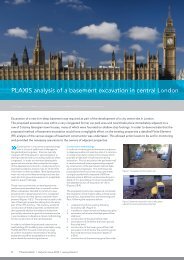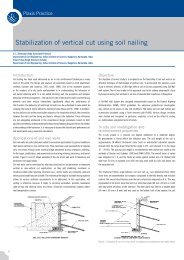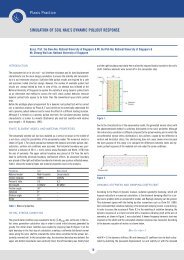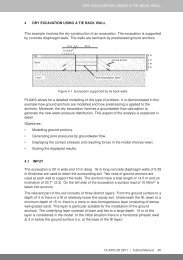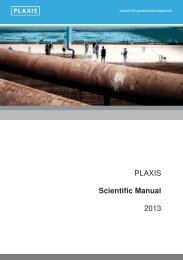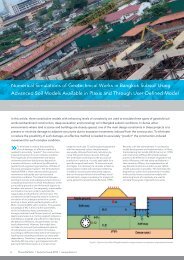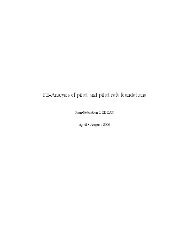PLAXIS LIQUEFACTION MODEL UBC3D-PLM - Knowledge Base
PLAXIS LIQUEFACTION MODEL UBC3D-PLM - Knowledge Base
PLAXIS LIQUEFACTION MODEL UBC3D-PLM - Knowledge Base
- No tags were found...
Create successful ePaper yourself
Turn your PDF publications into a flip-book with our unique Google optimized e-Paper software.
Acceleration (m/sec^2)2.521.510.50-0.5 0 5 10 15 20 25 30 35-1-1.5-2-2.5Time (sec)Figure 3.3: Total dynamic loading time 33 seconds. 50 loading cycles. Theamplitude of acceleration equals 1.96 m/s 2 . The frequency equalas 1.5 Hz.are extracted after calibration of UBCSAND with experimental data. Theuse of them in <strong>UBC3D</strong>-<strong>PLM</strong> should always be followed from a verificationprocess with specific experimental results. The parameters are summarizedin Table 3.1. The consolidation phase is calculated with a K 0 procedure in<strong>PLAXIS</strong>. The K 0 assumed 0.5 for this case.φ p ( ◦ ) φ c ( ◦ ) KB e KG e K p G me = ne np R f N1 60 fac hard34 31 721 1031 700 0.5 0.4 0.74 10 0.7Table 3.1: Input parameters for modelling the dynamic centrifuge.The post post liquefaction factor fac post equals 0.6.3.2 Results and discussionFigure 3.4 presents the predicted acceleration during the test both in thephysical and in the numerical model. The numerical results are adequatelyaccurate at a lower depth but the residual acceleration which is mobilizedin the soil in the deeper layers does not represent the real soil behaviourobserved in the physical model. During this project the influence of theelasticity parameters on the propagation of the shear waves has also been36



